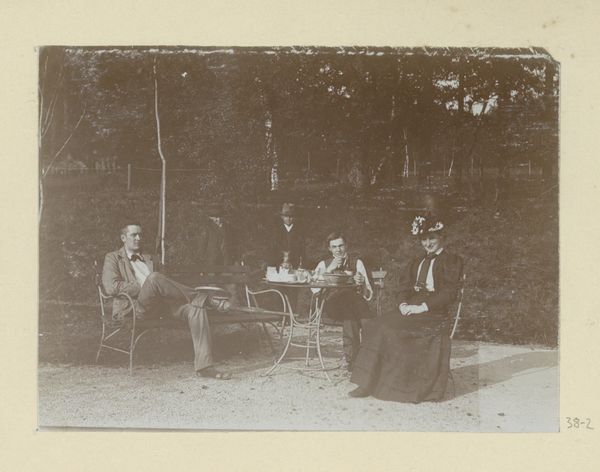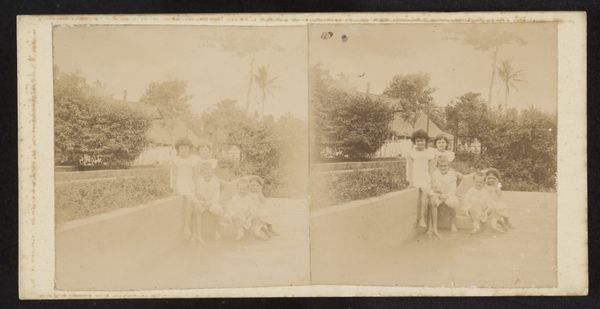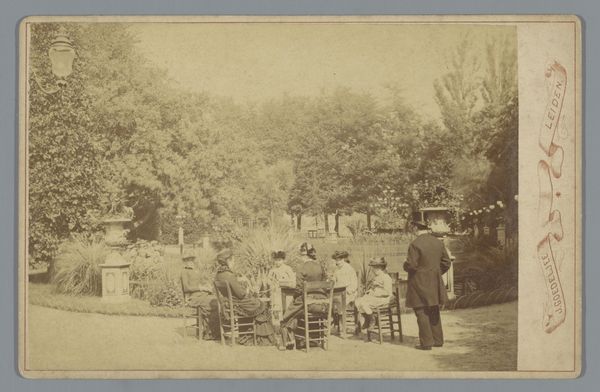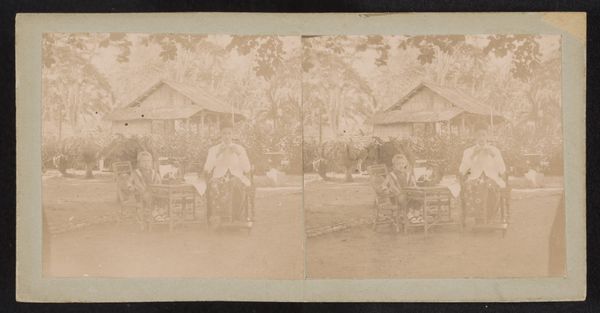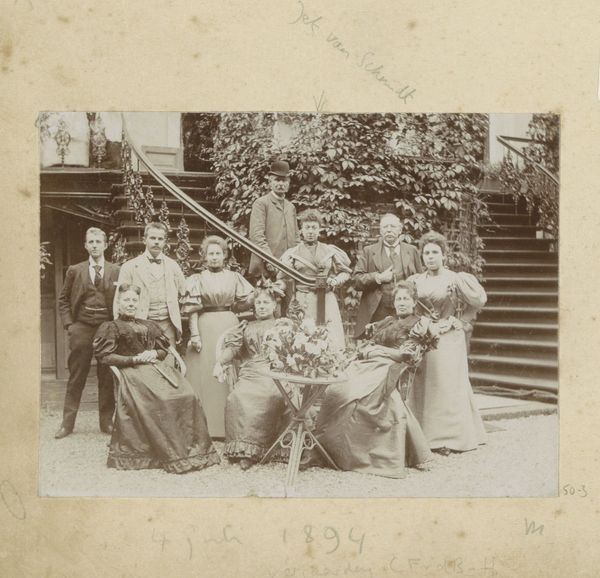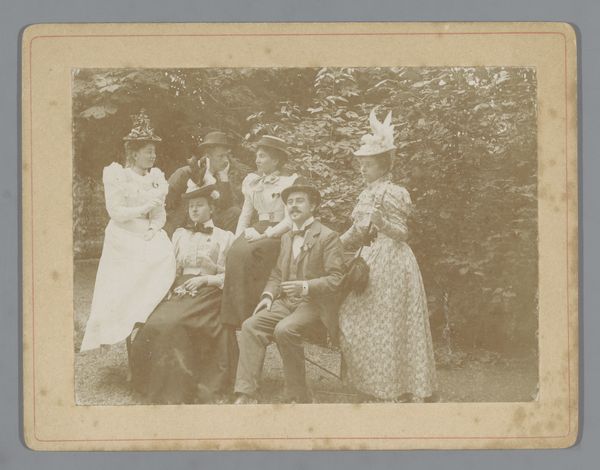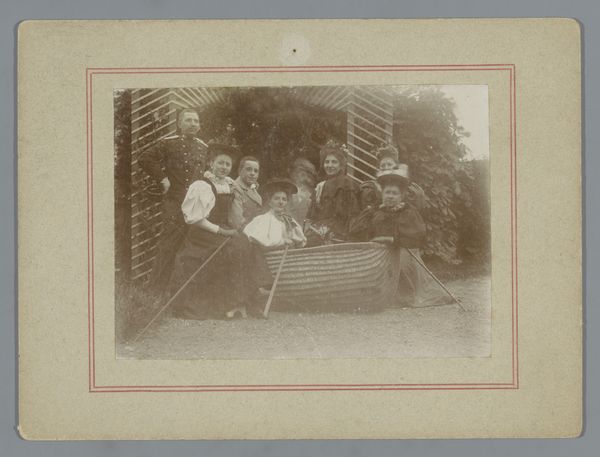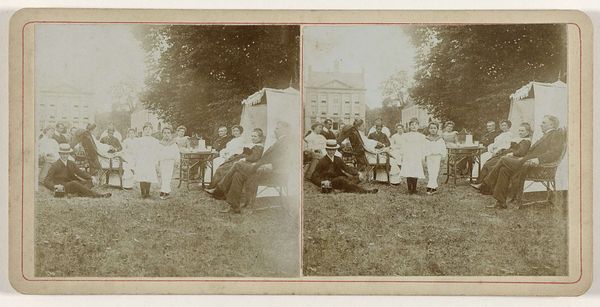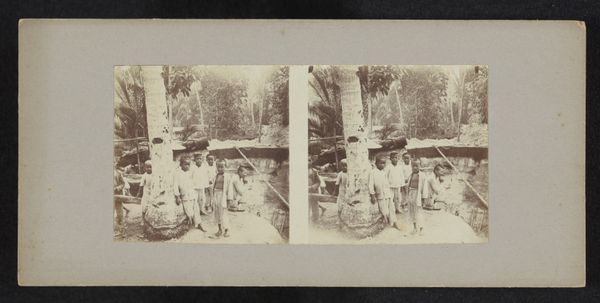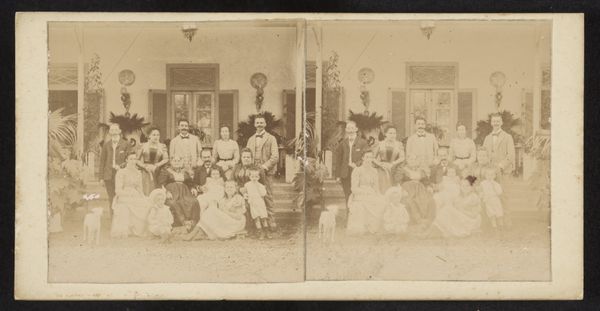
#
aged paper
#
ink paper printed
#
sketch book
#
personal sketchbook
#
pen-ink sketch
#
ink colored
#
pen work
#
sketchbook drawing
#
sketchbook art
#
watercolor
Dimensions: height 75 mm, width 80 mm, height 88 mm, width 178 mm
Copyright: Rijks Museum: Open Domain
Curator: Here we have "Vrouwen en kinderen" or "Women and Children" by Robert Julius Boers, likely created between 1900 and 1922. It's currently held at the Rijksmuseum. Editor: It gives off a sense of faded elegance. The sepia tones evoke nostalgia. The paper appears to have aged quite beautifully. Curator: Indeed. The photograph has that quality of being lifted straight from the past, triggering immediate connotations of memory and bygone eras. The image is reproduced twice in the frame suggesting a form of duplication meant for wider consumption. It also reveals an impulse to preserve these domestic ideals through technological reproducibility. Editor: I find it interesting to ponder the chairs. Note the design of the wire framework-- were these mass produced, signaling a move toward more readily available, if simple, furnishings? What class status did such industrial techniques provide for its owner and user? Curator: Fascinating! Also, given that Boers was photographing women and children seated together, often depicted together in religious paintings symbolizing innocence and purity. Considering societal expectations and domestic roles of women in that period, the gathering hints at societal values tied to home and family. The very act of sitting as a posture indicates peace, stability and domestic unity as cultural ideals. Editor: I agree that the choice to portray these figures at rest carries specific meanings. These garments suggest that the fabrics would have required specific weaving techniques that allowed for those shapes. Notice the hats: their function went far beyond protection from sunlight but declared that one belongs to a leisure class. All those material choices create certain effects on the viewer's reading. Curator: Right, it provokes contemplation of past cultural ideals regarding women, children, and their representation within the household. It leaves you pondering about the visual markers we still recognize and perpetuate, albeit differently, even today. Editor: Yes, examining material choices of even seemingly simple scenes sheds light on how we assign meaning, consciously and unconsciously, by way of the objects themselves and that allows an appreciation of not only its history but of our history.
Comments
No comments
Be the first to comment and join the conversation on the ultimate creative platform.
